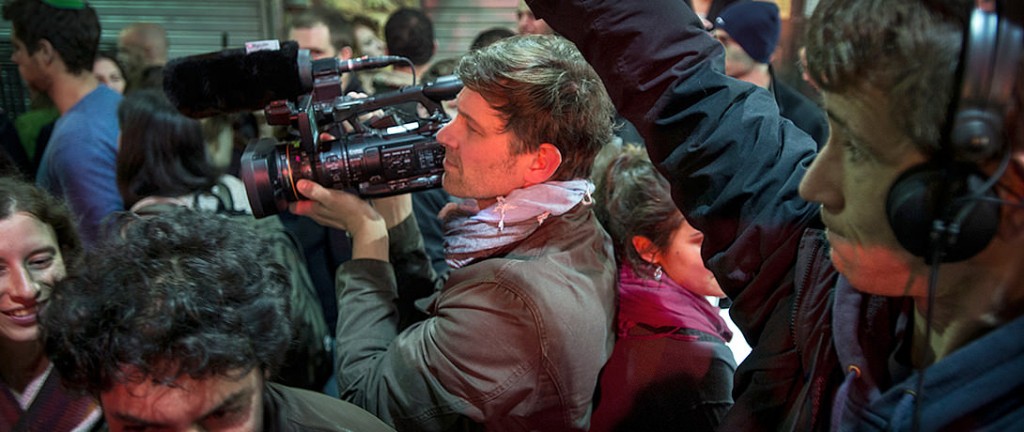From social networking to social TV, a lot of what constitutes media consumption, entertainment consumption, goods consumption today has become digital and social. The digital landscape significantly transformed the way users buy goods or consume information.
Due to the emergence of consumer technologies, users are no longer passive readers, viewers or listeners. They have become active participants; they are resourceful and tech-savvy. Imagine using the power of second screen when watching a documentary on television, computer or even on a tablet. Would that affect the experience? Would it enrich it?

Photo source: Desktop Documentaries
The multi-screen experience when watching a documentary serves as an additional educational tool. It helps viewers have a better understanding of the story. Documentaries and second screen together are about connecting the audience to a bigger picture. Sometimes, there are simply more nuances to a documentary than can be included.
Case scenario
David is watching “Hopkins,” a 2008 seven-episode documentary television series set around the professional and personal life of doctors at Johns Hopkins teaching Hospital. As a medical student himself, David likes to watch medical documentaries in his spare time. He’s studying to become a surgeon, so he finds documentaries like these relevant and informative.
As he is following episode’s six medical cases, David takes a special interest in the case of Thomas McGowen, a boy with a brain tumor that leads to blindness if not operated. He is intrigued by the operation that doctors perform on Thomas and he wants to know more about the procedure. So he fires up his smart phone and goes online to read more about brain tumor surgical procedures.
Similar to the case above, second screen can be used as a resourceful device within any educational institution. Law professors can play documentaries to students as real life scenarios for them to observe and analyze. In this case, students can use their smartphones or tablets to connect with extra information while watching the documentary. Via second screen, they can find additional articles, added details and facts that are helpful.
There are other scenarios too in which second screen becomes the appreciative extension to documentary viewing.

Photo source: 24hJerusalem.tv
A complementary experience with second screen content
“24h Jerusalem” is a 24-hour long city portrait documentary, shot by about 70 film crews in April 2013. The documentary captures a day in the city of Jerusalem. It aired online and on European TV stations for the entire 24-hours in 2014 April 12.
In February 2014, the platform 24hjerusalem.tv was launched with second screen content features that complimented the documentary. On April 12, the day of the broadcast, viewers were able to synchronize their devices by logging on to the platform to receive access to additional content regarding the protagonists, life in Jerusalem (education, families, religion, conflicts etc.), the city history and more. Texts (such as quotes, quizzes, fact sheets etc.), Vine-videos, interviews and excerpts were included as part of the second screen complimentary content.
The 24hjerusalem.tv platform also allowed users to share content and discuss the program. There was also a live-chat available during the broadcast, giving the users a chance to interact with members of the crew.
The whole project resulted in an enhanced documentary experience that brought people online together as they watched on TV how citizens of Jerusalem went about their daily business on just another regular day.
To those who ever had a doubt about the use of second screen in relation to documentaries, the “24h Jerusalem” project proves there are other ways too – interactive ways, fun ways, educational ways, indeed, poetic ways – of watching a documentary program.